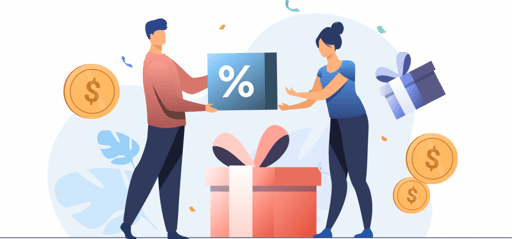Inflation: How Ecommerce Retailers Can Mitigate its Effects
Inflation: How Ecommerce Retailers Can Mitigate its Effects
Higher prices are here to stay. As a result, consumers are having to spend more on things like food, gas, and other staples — and many ecommerce companies are suffering as a result.
Inflation isn’t necessarily causing consumers to spend less money, but it’s changing what they buy and where they shop. With the worst of the pandemic behind us, consumers are more willing to visit brick-and-mortar locations, perhaps because they’ve been cooped up indoors since the pandemic.
After two years of explosive growth, the going might be getting tougher for ecommerce companies. By making a few adjustments to the way they do business, however, online retailers can build companies that are positioned to mitigate inflation and perhaps become even more profitable despite the challenging economic climate.
1. Incentivize and reward customers
One easy way for ecommerce retailers to fight inflation is increasing sales. To do that, they should consider incentivizing purchases by offering rewards and implementing loyalty programs.

According to a recent study, 76 percent of Americans said they planned to be more thoughtful about managing their money in 2022. To beat inflation, ecommerce companies should cater to these sentiments.
When it comes to buying similar products, if there is a choice between ecommerce retailers offering cash back or reward points, the decision that yields greater value will be clear to money-conscious shoppers.
2. Master cash flow management
One of the main reasons companies fail is because they run out of cash. In inflationary environments, cash flow problems can spiral out of control quickly as suppliers and vendors raise prices and tighten up payment terms.

For this reason, ecommerce businesses need to pay closer attention to cash flow than they have in recent memory. By forecasting future cash flows and preparing ancillary financing streams, ecommerce companies can smooth out financial peaks and troughs, be sure funds are in place to cover outgoings, and be in a position to respond to opportunities to secure supply at competitive prices.
3. Focus on price optimization
Historically, ecommerce retailers cared more about growing their user base than they did about profitability. With inflation leading to permanently higher prices, their focus needs to shift to price optimization, or setting the perfect price for each product to ensure they remain competitive enough to attract buyers but high enough to maximize profits and minimize what gets left on the proverbial table.

Thanks to innovative technology powered by artificial intelligence (AI), optimizing prices for profitability is easier than ever to achieve. The latest AI technology is capable of analyzing large swaths of internal and external data, turning it into actionable recommendations that can be instantly implemented. It also predicts the impact on revenue and margin, which helps with financial forecasting.
Worried that your customers will notice price differences and reconsider their purchase decisions? Don’t be. If there’s one thing consumers are familiar with, it’s ecommerce pricing that fluctuates constantly.
To learn more about the transformative power of AI-driven price optimization, check out our on-demand webinar: Price Optimization in the AI Era: A Guide for Retailers Pricing in the 2020s.






